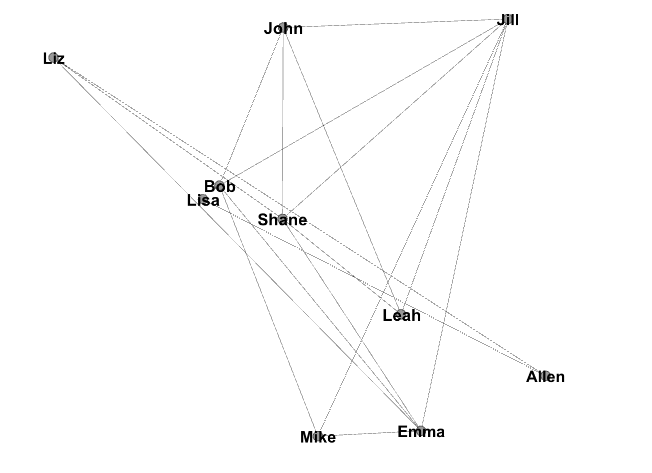This is my first look into social network analysis for learning. We are starting with the idea that there is value in understanding how interactions happen during learning regardless of the context. This sets the stage for digging in deeper and conducting analysis on the social networks that learners participate in such as twitter or a blog.
Dragan (our instructor) mentioned that researchers have often thought social networks may be the most important component of learning. And the analysis of social networks is based on various research fields. He mentioned some key characteristics that will be of focus include density, centrality, and modularity.
Network Elements
Social networks have some key structural elements that can be identified in order to establish a common language and conceptual model. This allows us to analyze them. In this mooc we discussed three key elements, the actor, relations, and data sources.
Actor
The actor is a node or vertex within the network. In social networks this is typically a person or learner, but I don’t think it would necessarily need to be a person.
Relations
The relation in the network refers to the ties, edges, arcs, and links that connect the actors. Relations can be undirected and weighted or they can have a direction, meaning that an actor can be the sender and any actor that receives data can be the receiver. So, actors can be senders or receivers or both.
Additionally, the relation between two actors can also be labeled or categorized. This means they can represent something, such as friendship, advice, hindrance, or can be a form of communication. I would imagine this could be a very interesting component of network analysis to try and identify and define these relations for the purpose of understanding the learner, the network, or the context.
Data Sources
The third element discussed in the mooc was the area of how the data was collected. I think the idea of how you gather your data will have an impact on what filter you use to analyze the data. Is it you own data such as email or is it from twitter? This collection process impact what you can look at and create a potential bias on how you analyze the information and what conclusions you may be able to make from that analysis.
As a reflection, I don’t think this third element is well articulated within the mooc materials.
Analysis
There were three key areas of analysis that we are looking at which include density, centrality, and modularity.
Density is the degree to which actors are connected to all the other members in the network. Centrality is the extent in which the actors are organized around a central point.
Modularity is the way that you quantify the modules within the network or community, by counting and analyzing the ties between the actors. (It can get more complicated quickly, but this is the core.)
Potential Benefits
My first approach to considering how studying social networks might be beneficial to enhancing learning, is impacted by traditional classroom instruction. As a facilitator you often lurk about your classroom or learning environment and just listen. What are they saying, who is saying it, who is dominating the conversations, and do they have a grasp of concept? Should I step in and correct something that has been miss-communicated? Do I need to provide clues to a small group to get them headed in the right direction? Did they understand anything I said?
I would think if you could monitor a social network of a group of “actors” all with similar learning goals (i.e. a class or group of employees) you could begin to get a sense of how their learning was/is progressing. I would also think that it meet even create a safer environment for learners who struggle with social settings.

No comments:
Post a Comment